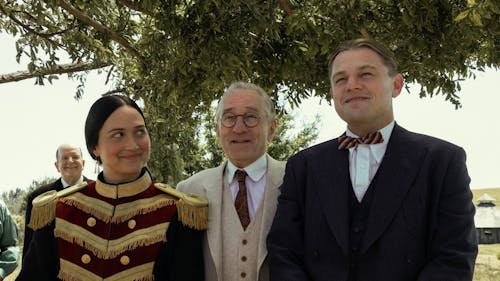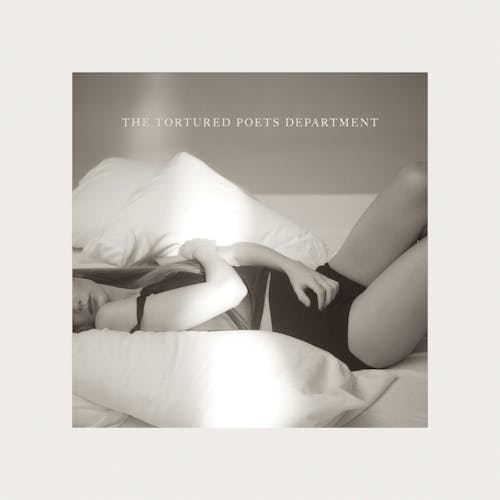Scorsese revamps his own style in 'Killers of the Flower Moon'

If you had to guess any movie enthusiast's favorite movie director, it would be a safe bet to assume they would praise Martin Scorsese.
Scorsese is widely considered to be one of the greatest film directors ever, cherished for his bold and uncompromising approach to the medium. Even after a career spanning more than 50 years, his passion for the craft still shines through as bright as ever, especially in his most recent film, "Killers of the Flower Moon."
Based on David Grann's non-fiction book of the same name, "Killers of the Flower Moon" depicts the real-life series of murders that took place in 1920s Oklahoma, targeting the Osage Nation, an Indigenous tribe.
The killings, orchestrated by corrupt crime lord William King Hale (Robert De Niro) and carried out by his nephew, Ernest Burkhart (Leonardo DiCaprio), are part of a larger scheme to steal the tribe's oil-rich land and keep it in the hands of the white townspeople.
The story mostly focuses on the sinister crime ring, but at the heart of the story is Burkhart's wife, Mollie Kyle (Lily Gladstone), an Osage Nation member who sets out to uncover the truth behind the murders, unaware of her husband's involvement.
"Killers of the Flower Moon" distinguishes itself within Scorsese's already bleak and violent filmography, possibly ranking as one of his most brutal entries. With a runtime of nearly 3.5 hours, the film pulls no punches, presenting a mostly factual and in-depth examination of some of history's most horrific events.
This deliberate tone serves a purpose, though, as Scorsese aims to portray these historical atrocities. After past criticisms of glorifying immoral conduct in his films, Scorsese makes his intentions clear in "Killers of the Flower Moon."
Instead of his usual over-the-top, fast-paced style that audiences have come to know in films like "Goodfellas," he adopts a much grittier and realistic approach in his latest film. It gives the film the feel of a documentary rather than a conventional narrative, a choice that feels appropriate given the subject matter.
This approach also contributes to the film's sense of authenticity. Throughout the production of the film, Scorsese also made sure to consult Osage people to ensure that the movie felt real.
The film's setting, 1920s Oklahoma, marks a departure from the typical suburban and urban backdrops of most Scorsese films, but it is nonetheless captivating and feels lived in. The stunning environments serve as a perfect contrast to the violent actions of the film's main characters, illustrating the seductive pull of greed and power.
Scorsese's protagonists have consistently been depicted as morally complex figures and deeply flawed anti-heroes, whether it's Travis Bickle in "Taxi Driver" or Henry Hill in "Goodfellas." In this film, Scorsese rightfully strips Hale and Burkhart of any potential redeeming qualities or happy endings, showcasing how vices can completely corrupt a person.
Despite their established star status, DiCaprio and De Niro seamlessly immerse themselves in their roles, reaffirming why Scorsese continues to collaborate with them. Both manage to convey a menacing aura that quickly converts to cowardice and unwillingness to atone for their wrongdoings.
As great as these performances were, the standout element of this film was undoubtedly Gladstone. They completely steal the show, demonstrating their ability to exude grace and composure, even in the film's most dire scenes.
As great as Gladstone's performance was, I couldn't help but feel disappointed that we didn't see more of them.
Despite the long runtime, the majority of the plot is devoted to the rise and fall of Hale and Burkhart, to the point where Gladstone's character and the rest of the Osage Nation members are notably absent for prolonged periods. It did feel like somewhat of a missed opportunity to frame the story around Mollie's perspective.
In the twilight of his illustrious career, Scorsese continues to cement himself as one of the greatest ever to do it, delivering challenging and thought-provoking work like "Killers of the Flower Moon."



